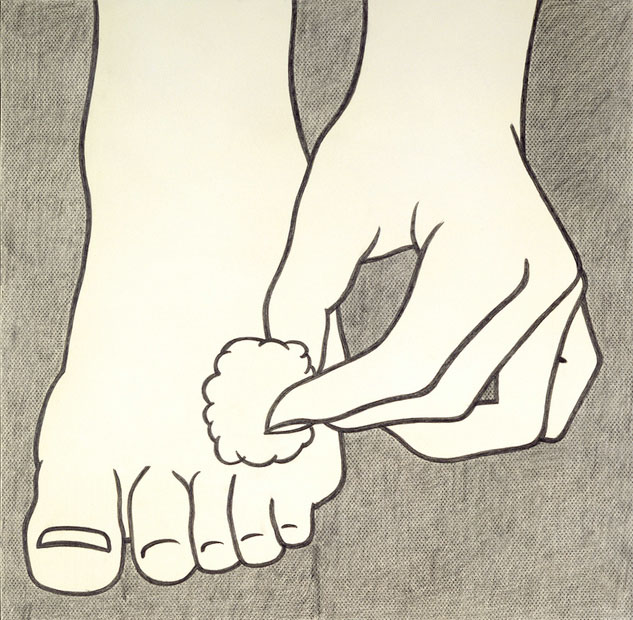Apparitions: Frottages and Rubbings from 1860 to Now
Houston: Sept 11, 2015 – Jan 3, 2016
The deMenil Collection in Houston filled their whole current exhibition space with rubbings. Frottages is the title in French, which makes the activity sound like something exotic enough to fill such a prominent museum.
The Menil’s changing exhibition spaces in their main museum building is flexible but often intimate and lit so that the work feels precious and in need of protection from intense light. This show was no exception but before we entered the show, there was a large example of a frottage that brought the show to a personal level. Hanging from above and extending into human level was a rubbing that made me recall doing the same kind of work.

As a kid, I visited a cemetery with my class and we all made rubbings over the tombstones of our choice. And as an adult, at a memorial cemetery in France we rubbed the stone with the name of a great uncle killed in World War I.
The idea is simple – drawing over a texture, but the use of such a technique is, as we soon saw, infinite. One can draw on anything and the effect is so contrary to drawings as we expect them. Drawings are usually an illusion, the portrait, the landscape, the space that multiple marks on the paper combine to illustrate. And when this ‘image’ is the emphasis, drawers usually set up their paper on a smooth surface that won’t impart anything extra to the drawing.
But this technique feels cast in stone. And then someone rubs over it with a pencil.

One large rubbing was made on a 6-panel door, all the indentations you’d expect were there, and that embossing what we were shown – we never saw the rubbed marks, instead we saw the verso, which was then spray painted silver. The normal was transformed.
Similarly conceptual was a rubbing of a stack of two by fours which extended around the edges of the stack and made a three dimensional, realistic drawing of the pile.
Rubbings using a scroll of paper extended from the ceiling and draped for several feet along the floor. The length of the rubbing is interesting – was multi-colored and may have been a little distracting – and when following a line in the texture a familiar landscape appeared on a real scale not something far away and small compared to its reality: a crack in familiar asphalt. What else could be rubbed making use of this length of paper? We were prompted to think.
Robert Morris rubbed the paper wrapper of a book – like the one’s I’d made as a kid for my schoolbooks – and then takes the paper off the book, and laid it out. The pencil marks felt like velvet.
A few steps in the Land of Confucius (with seal stamp) is a large work, with some little weak marks of the stamp. Possibly made in China? on tile? The discovery from what little information was provided on the paper (and curatorial notes) prompted further inspection of the surface. Would I have looked longer if the exact location was given? Maybe.

